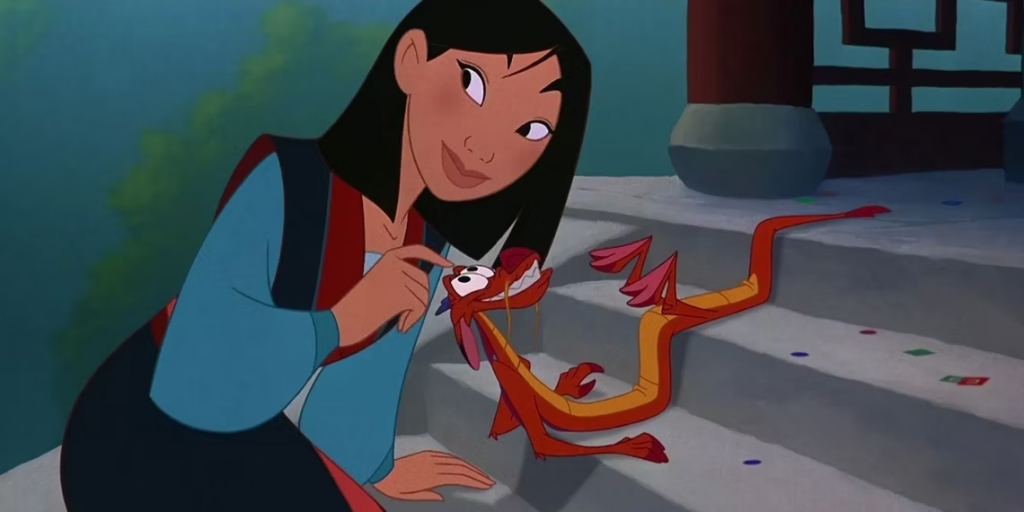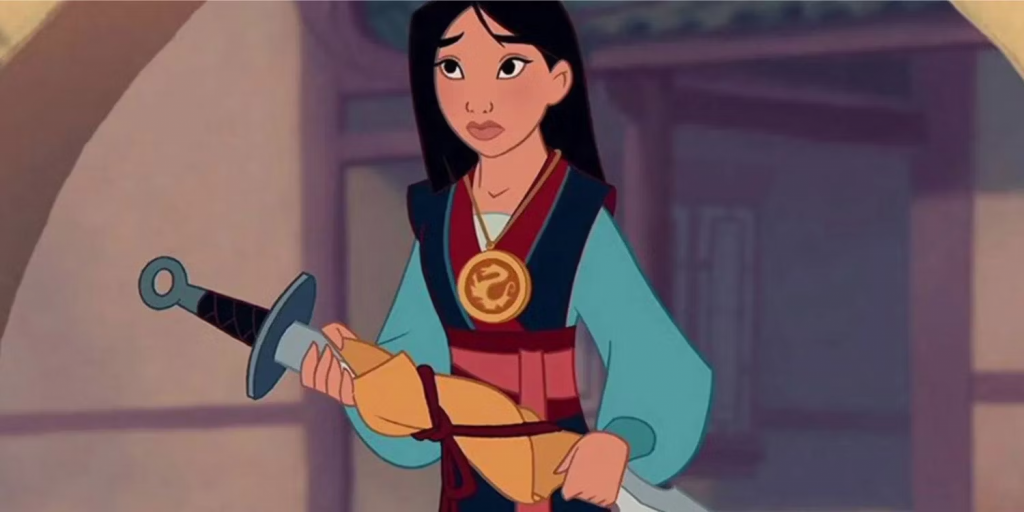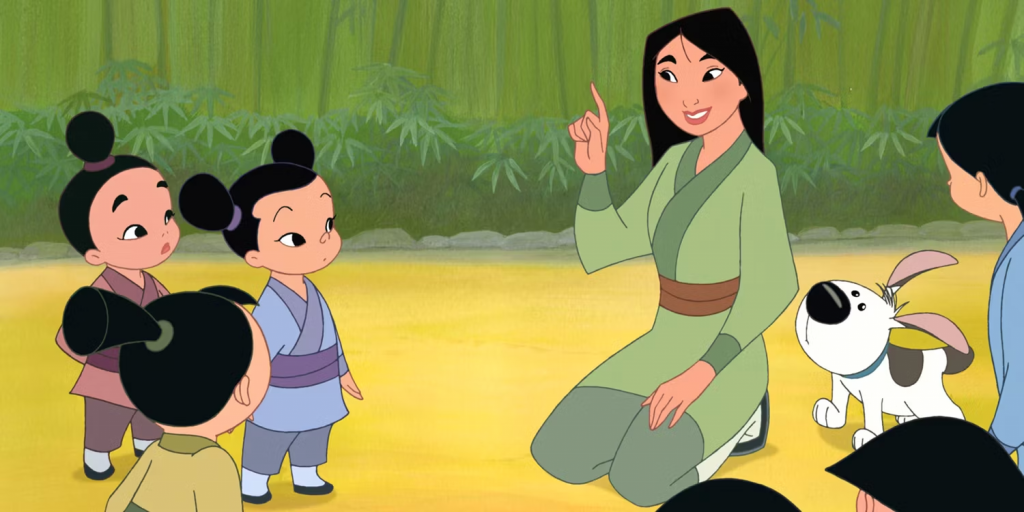
In the realm of legends and folklore, Disney has established a distinct reputation for reimagining and repackaging dark and intricate narratives into more palatable and child-friendly versions, thereby expanding their appeal to a broader audience. Classic tales like Cinderella, the adventures of Peter Pan, and the legendary journey of Mulan all undergo a transformation that softens the edges and streamlines the complexities, yet, remarkably, the fundamental essence and moral core of these stories remain inherently true to their origins. This phenomenon is particularly evident when considering Disney’s treatment of Mulan in the 1998 animated film, an adaptation that, while notably divergent from the original source material, successfully retains the virtues of courage, ingenuity, and honor that its predecessor so gallantly embodied.
Mulan, the central character of this narrative, has enjoyed a venerable status spanning countless centuries. While often relegated to the realm of fiction, there persists an argument among some that her story might have its roots in actual history. The most renowned rendition of her tale arrived in the form of “The Ballad of Mulan,” a succinct yet impactful poem originating as far back as the sixth century. This poem serves as a concise yet potent encapsulation of Mulan’s transformative journey over the span of a decade. The poem narrates her response to the call of duty when her aging father or young brother faces conscription into the war effort. Mulan’s remarkable act of self-sacrifice sees her disguising herself as a man and enlisting in the army to spare her family from the horrors of battle. Akin to a steadfast “he-hare” alongside her companions, her resolute endeavors see her victorious return after numerous battles. Even after meeting the Emperor himself, she modestly declines a promotion, instead requesting a horse for her journey home. The poem culminates in the revelation of her true gender to her fellow soldiers, which she amusingly frames as a matter of perception: “The he-hares’s feet go hop and skip, / The she-hare’s eyes are muddled and fuddled. / Two hares running side by side close to the ground, / How can they tell if I am he or she?”
Over the ebb and flow of time, it is only natural that such an ancient tale should undergo metamorphosis through the hands of various storytellers, each contributing their own creative flourishes. Adaptations of Mulan’s saga have introduced new layers and facets, even preceding Disney’s 1998 interpretation that brought her into the modern cinematic spotlight. Playwrights and novelists have tinkered with Mulan’s origins and post-war fate, effectively molding the contours of her narrative to align with their artistic vision. In 1655, for instance, Chu Renhuo penned the “Romance of Sui and Tang,” which lent a darker epilogue to Mulan’s post-army life, concluding in her tragic death. While “The Ballad of Mulan” commenced as a concise poetic account, the tale’s universality has incited myriad storytellers to craft their own renditions, imparting nuanced variations. Yet, despite these evolutionary alterations, the essence of Mulan’s indomitable spirit and her unwavering commitment to honor and duty remains the steadfast core.

In Disney’s interpretation, Mulan’s story encounters a host of modifications. These changes manifest on multiple levels, from significant shifts in her background and ethnicity to surface-level amendments that cater to a younger audience. In the film, the antagonistic Huns replace the historical Xiongnu, who would have been more contextually accurate as adversaries during the timeframe of the narrative. Additionally, characters like Mushu, a Disney-original figure, and Li Shang, Mulan’s love interest, are incorporated to resonate with familiar Disney narrative conventions. However, the crux of the story remains centered on family devotion and ancestral reverence, themes derived from the original poem. Even if certain characters and aspects have been tailored to cater to Disney’s style and target audience, the essence of Mulan’s journey—her journey to prove her worth, her valor in battle, her cunning to save the Emperor, and her decision to forsake personal advancement to return home—remains intact.
Disney’s portrayal imparts added depth to Mulan’s motivation by delving into her life before the war summons. The film illuminates her struggles with societal expectations and gender norms, revealing her unease with the prescribed roles of womanhood in her culture. This nuanced exploration lends an extra layer of complexity to her decision to disguise herself as a man, ultimately magnifying her transformation into a symbol of empowerment. While the original poem predominantly focuses on her wartime exploits, Disney intertwines her personal growth and familial loyalty with her defiance of traditional gender roles, presenting a multifaceted portrayal that resonates with modern audiences.
Amidst the variations, both the classic narrative and Disney’s adaptation share a fundamental throughline: Mulan’s unwavering devotion to her family and her courageous journey of self-discovery. Regardless of the differences in detail, both versions pivot on her selfless act to safeguard her loved ones by donning armor and taking her father’s place in battle. Her journey exemplifies valor and selflessness, culminating in feats that transform her from a dutiful daughter to a resolute warrior. It is this essence, rooted in bravery, love, and honor, that stands as the beating heart of both the original “Ballad of Mulan” and Disney’s cinematic offering.

The spirit of the “Ballad of Mulan” endures and thrives in contemporary retellings, undeterred by the inevitable shifts in narrative interpretation. Regardless of how the details might diverge, Mulan’s unwavering determination, kindled by love and guided by honor, remains a constant beacon across all renditions. Beyond being an exemplar of courage and tenacity, she also embodies an enduring source of inspiration for those who find themselves on the fringes, those who aspire to transcend societal expectations, and those who seek to rewrite their destiny against all odds. Particularly for young girls and women worldwide, Mulan’s saga is a reminder that greatness is attainable through determination and that even the most time-honored of tales can continue to inspire fresh generations.
In the grand tapestry of adaptations, Disney’s version of Hua Mulan emerges as a captivating thread, woven into the larger fabric of a centuries-old narrative. While it may cater to younger audiences and navigate its own creative liberties, it nevertheless upholds the core spirit and essence of the original Hua Mulan. Certain stories, no matter how ancient, possess a resonance that transcends eras, remaining resolute in their ability to capture the imagination and propel the spirit of aspiration forward. The myth of Mulan stands as a testament to the enduring power of storytelling, an immortal tale that is poised to kindle inspiration for generations yet to come.”
We bring out some of the most well-known Disney collection, all of which are available at reasonable costs. Visit our link now if you are interested in the Disney collection


Peter Pan, Wendy Darling, Tinker Bell, Captain Hook, Simba
